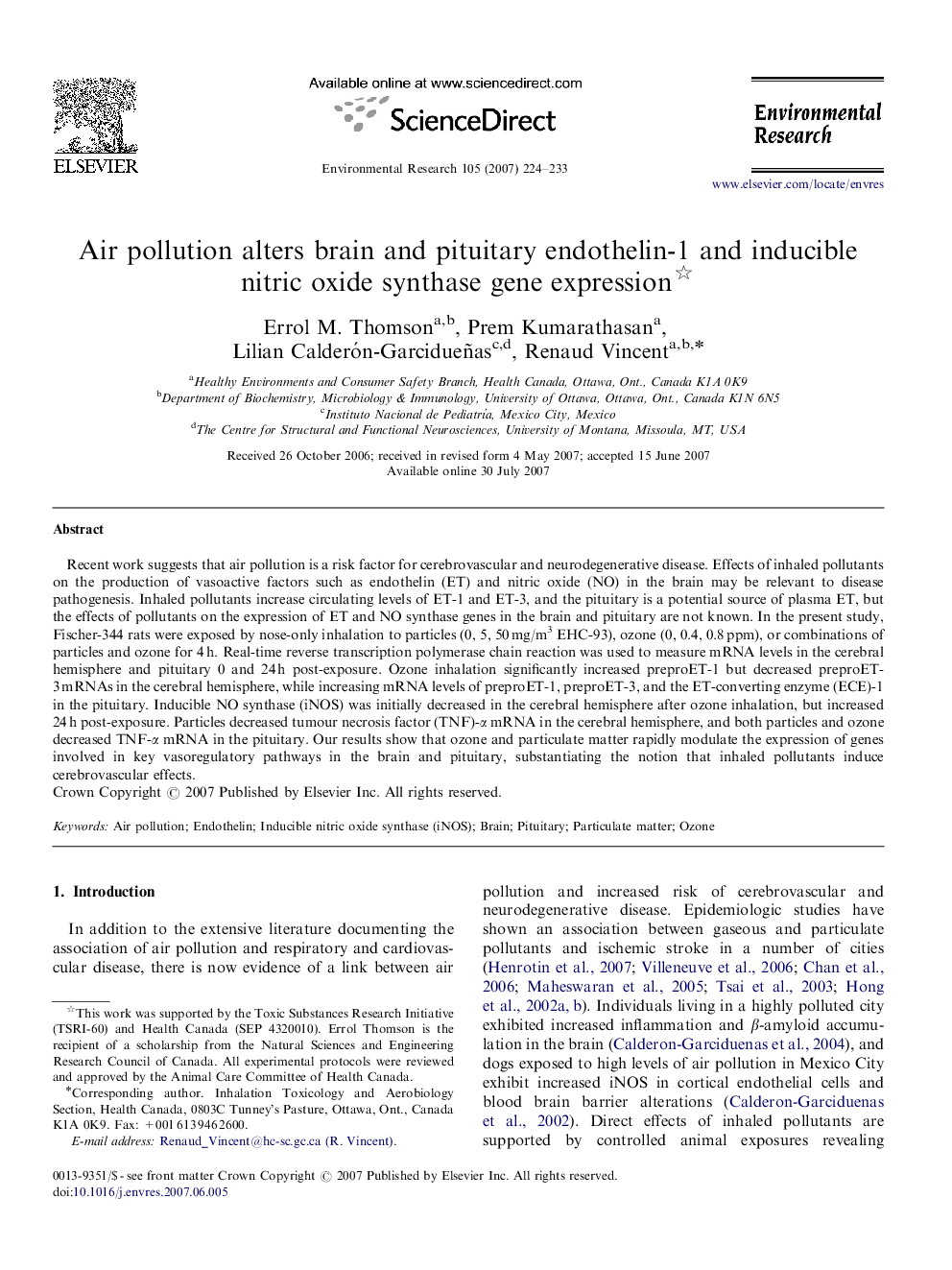| Article ID | Journal | Published Year | Pages | File Type |
|---|---|---|---|---|
| 4470464 | Environmental Research | 2007 | 10 Pages |
Recent work suggests that air pollution is a risk factor for cerebrovascular and neurodegenerative disease. Effects of inhaled pollutants on the production of vasoactive factors such as endothelin (ET) and nitric oxide (NO) in the brain may be relevant to disease pathogenesis. Inhaled pollutants increase circulating levels of ET-1 and ET-3, and the pituitary is a potential source of plasma ET, but the effects of pollutants on the expression of ET and NO synthase genes in the brain and pituitary are not known. In the present study, Fischer-344 rats were exposed by nose-only inhalation to particles (0, 5, 50 mg/m3 EHC-93), ozone (0, 0.4, 0.8 ppm), or combinations of particles and ozone for 4 h. Real-time reverse transcription polymerase chain reaction was used to measure mRNA levels in the cerebral hemisphere and pituitary 0 and 24 h post-exposure. Ozone inhalation significantly increased preproET-1 but decreased preproET-3 mRNAs in the cerebral hemisphere, while increasing mRNA levels of preproET-1, preproET-3, and the ET-converting enzyme (ECE)-1 in the pituitary. Inducible NO synthase (iNOS) was initially decreased in the cerebral hemisphere after ozone inhalation, but increased 24 h post-exposure. Particles decreased tumour necrosis factor (TNF)-α mRNA in the cerebral hemisphere, and both particles and ozone decreased TNF-α mRNA in the pituitary. Our results show that ozone and particulate matter rapidly modulate the expression of genes involved in key vasoregulatory pathways in the brain and pituitary, substantiating the notion that inhaled pollutants induce cerebrovascular effects.
